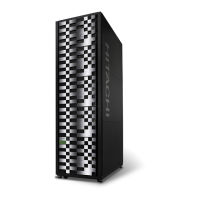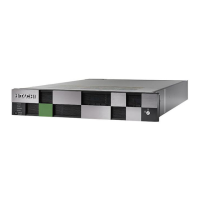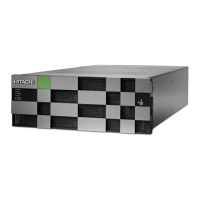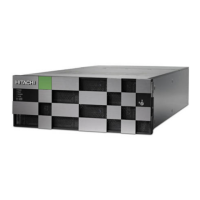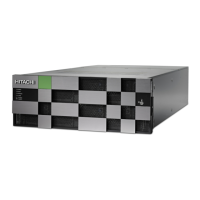Item Description
Description Mirror disks (duplicated writing). The two parity groups of RAID 1(2D
+2D) ar
e concatenated and data is distributed on them. In the each
RAID pair, data is written in duplicate.
Advantage
This
conguration is highly usable and r
eliable because of the
duplicated data. It has higher performance than the 2D+2D
conguration because it consists of the four RAID pairs.
Disadvantage Requires disk capacity twice as large as the user data.
RAID 5
A RAID 5 array group consists of four or eight drives (3D+1P) or (7D+1P). The data is
written across the four drives or eight drives in a stripe that has three or seven data
chunks and one parity chunk. Each chunk contains either eight logical tracks (mainframe)
or 768 logical blocks (open). This RAID 5 implementation minimizes the write penalty
incurred by standard RAID 5 implementations by keeping write data in cache until the
entire stripe can be built, and then writing the entire data stripe to the drives. The 7D+1P
RAID 5 conguration increases usable capacity and improves performance.
The follo
wing two gures illustr
ate the RAID 5 congurations. The tables follo
wing the
gures describes each conguration.
Note: RAID 5 contains two congurations: 3D+1P conguration (four disk
drives) and 7D+1P conguration (eight disk drives). The following diagram
sho
ws the 3D+1P conguration. In the 7D+1P conguration, data is arr
anged
in the same way
.
RAID 5
Chapter 3: Hardware architecture
Hitachi Virtual Storage Platform G1000, G1500, and VSP F1500 Hardware Guide 63
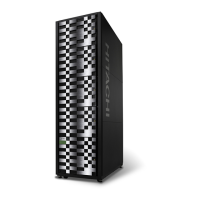
